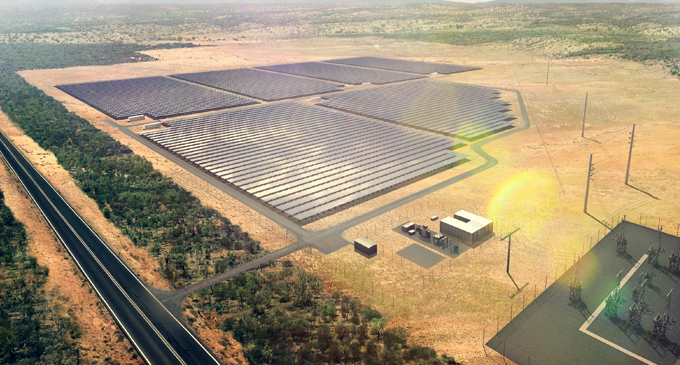Energy reliability is a major concern for grid-connected mines in Australia with supply constraints and power disruptions hampering production and expansion plans. In this context, the Lakeland Solar & Storage Project, currently under construction in northern Queensland, is particularly relevant for miners as it will demonstrate the power reliability benefits of large-scale solar PV and storage. 
David McCallum, Managing Director at Conergy Australia, is leading the development of this groundbreaking project which combines a 10.8 MW (AC) solar PV plant with 1.4 MW / 5.3 MWh of lithium-ion battery storage to provide renewable power to the town of Lakeland and surrounding areas through the grid. “This project will demonstrate the enormous potential of renewables generation during the day and storage for evening power use, hence why we have a lot of mining firms watching closely,” he comments.
In this Q&A interview, McCallum offers an update on this innovative project which is being supported by the Australian Renewable Energy Agency (ARENA) and counts BHP Billiton as one of its Knowledge Sharing Partners.
Energy and Mines: Can you give us an update on the project?
 David McCallum: We have passed the halfway mark on construction with the land cleared and the mounting structures installed. The solar modules are on their way right up to Cairns at the top end of Australia and all the major works in terms of the connection with the local distribution substation are complete. The battery storage is in the testing phase and will arrive in April which is what we are targeting for a COD date.
David McCallum: We have passed the halfway mark on construction with the land cleared and the mounting structures installed. The solar modules are on their way right up to Cairns at the top end of Australia and all the major works in terms of the connection with the local distribution substation are complete. The battery storage is in the testing phase and will arrive in April which is what we are targeting for a COD date.
EM: What are the main drivers for this project?
DM: The site sits on the national electricity highway known as the National Electricity Market (NEM) in Australia. Its located at the second to last substation on the national grid right at the top with the closest power station 1500 KM away.
The purpose of the project is to test solar’s capacity to provide stable grid power that far north from any power station. The addition of storage will demonstrate how renewables can provide baseload power which is, of course, the holy grail for renewables.
We will also test the frequency control ancillary services (FCAS) of solar and storage to ensure power quality. The project will also be the first to test the concept of ‘islanding’ which will allow us to switch the town off from the grid and deliver its power requirement from stored energy from the battery.
This project will prove the reliability of renewables generation during the day and storage for evening use, hence why we have a lot of mining firms watching closely. We want to test all the operational modes of the battery and the islanding mode is very important from a mining aspect because it will prove energy storage and solar can provide quality power for mines.
EM: BHP Billiton is part of the “Knowledge Sharing Steering Committee” for the project. Can you tell us about the  global mining leader’s interest in Lakeland?
global mining leader’s interest in Lakeland?
DM: BHP Billiton is an important part of the Knowledge Sharing Program attached to the project. From a commercial aspect, the benefit for BHP is to learn first-hand about the engineering aspects of the project. They are the exclusive mining partner. We have had a lot of interest from other miners in knowledge sharing.
EM: How does this type of fringe-of-grid project inform energy strategies for mines?
DM: The primary design of the solar array and battery application was for off-grid, diesel displacement but that is not all it is capable of. It can also ensure power stability from the grid. A lot of renewables are being fed into the grid in Australia and this can cause voltage and regulation issues so storage has become a key factor in our market to allow renewables to provide baseload power.
Assisting miners to move from their traditional power sources is a goal not only for Conergy, but for the renewables industry. This project will prove the theory that solar and storage can be a secure power source for miners.
ENDS

